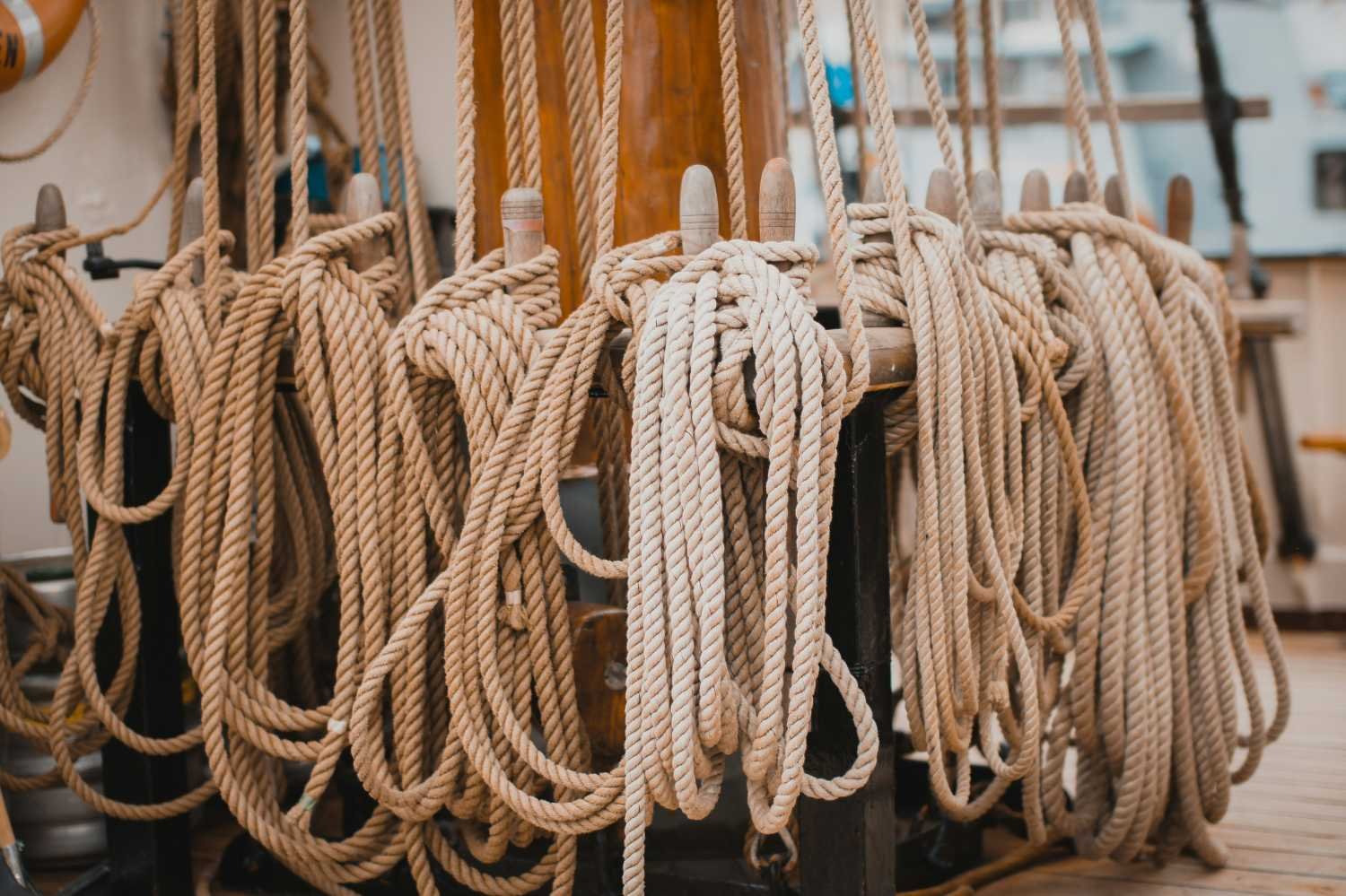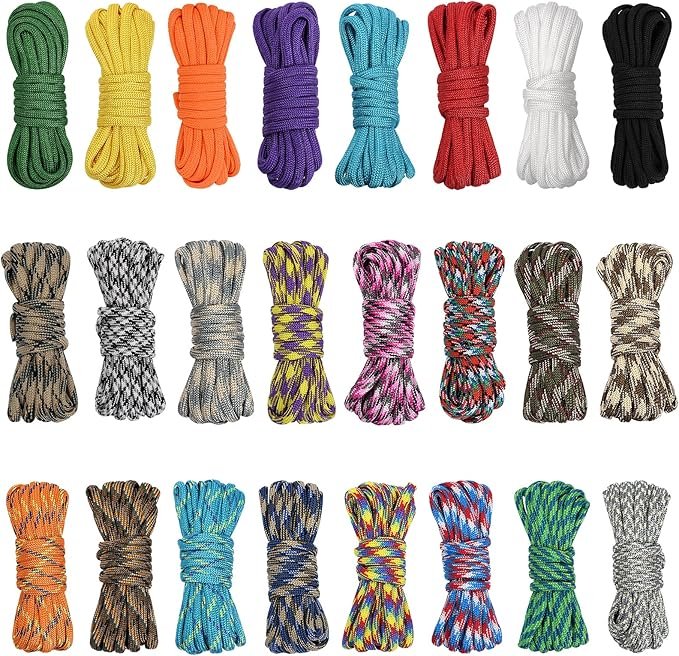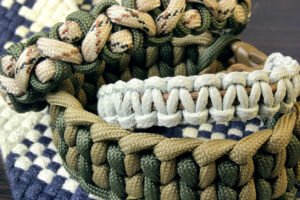
How to Splice Polyester Rope
Splicing a rope is an essential skill for anyone who works with or relies on ropes, whether in maritime, industrial, or outdoor settings. When it comes to polyester rope, knowing how to create a strong, reliable, and permanent eye splice can significantly enhance both the safety and functionality of your gear. Unlike nylon, which has higher elasticity, polyester rope is prized for its low stretch, high strength, and excellent abrasion resistance, making it a top choice for applications where stability and durability are key. This comprehensive guide will walk you through the complete process of splicing polyester rope, explain why this material is unique compared to alternatives like nylon, and offer professional tips to ensure a perfect splice every time. Whether you’re a sailor, contractor, or outdoor enthusiast, mastering this skill will greatly enhance your rope work capabilities.
Understanding Polyester Rope Characteristics
Before diving into the splicing process, it’s crucial to understand why polyester rope is a preferred material for many demanding tasks. Here’s an in-depth look at its properties and how they compare to other materials:
- Low Stretch and High Strength: Polyester rope exhibits minimal elongation (typically 3-5% under load), which is crucial for applications like sailing lines, lifting slings, and mooring lines where stability is paramount. This contrasts with nylon rope, which can stretch up to 15-20%, making it better for absorbing shock loads but less suitable when minimal stretch is desired. The molecular structure of polyester fibers provides exceptional tensile strength while maintaining minimal elongation properties.
- Excellent Durability: This rope boasts superior resistance to abrasion, UV light, and moisture. It does not absorb water like nylon does, meaning it won’t become heavier or lose significant strength when wet. This makes it ideal for long-term use in harsh marine environments. The UV resistance of quality polyester rope ensures it maintains its integrity even after prolonged sun exposure, unlike polypropylene which degrades quickly in sunlight.
- Chemical and Environmental Resistance: Polyester rope demonstrates remarkable resistance to most chemicals, oils, and solvents commonly encountered in industrial and marine environments. This chemical stability ensures the rope maintains its performance characteristics even when exposed to harsh substances that might degrade other synthetic fibers.
- Wide-Ranging Applications: From marine and fishing industries to offshore platform mooring and general industrial use, polyester rope is incredibly versatile. Its balance of properties has led to its specification in international standards for critical applications. The consistent performance across various environmental conditions makes it a reliable choice for everything from recreational boating to heavy industrial applications.
Choosing a high-quality polyester rope from a reputable rope manufacturer is the first step to ensuring a successful splice. A good manufacturer will produce rope with consistent texture and lay, which makes the splicing process smoother. The manufacturing process involves precise control over fiber alignment and tension, resulting in a product with predictable performance characteristics.
Essential Tools and Materials for Splicing
Gathering the right tools before you start will make the task much easier and ensure professional results:
- Quality Polyester Rope: Select the appropriate diameter for your project. For practice, start with ½-inch diameter rope as it’s easier to handle. The exact length will depend on your project, but having an extra few feet is advisable for practicing the splice and accounting for the rope consumed in the splice itself.
- Specialized Splicing Tools: A proper splicing fid is essential – these come in various sizes and types, including tubular fids and traditional pointed fids. Modern synthetic fids are often preferred as they won’t damage the rope fibers. Additionally, consider investing in a fid set with multiple sizes to handle different rope diameters.
- Preparation Materials: Have a lighter or heat gun for sealing ends, and quality tape for marking and temporary binding. Sharp scissors or rope cutters are essential for clean cuts. A permanent marker will help track strands during the complex process.
- Work Area Setup: Ensure you have a clean, well-lit workspace with adequate ventilation if using heat tools. A comfortable working height and sufficient space to lay out the rope are important for maintaining consistency throughout the splicing process.
- Safety Equipment: While splicing is generally safe, wearing protective gloves can prevent rope burns and minor cuts, especially when working with larger diameter ropes or when applying significant tension during the splicing process.

Comprehensive Step-by-Step Splicing Guide
The following detailed steps will guide you through creating a strong and neat eye splice in double-braided polyester rope. This is one of the most common and useful splices, creating a permanent loop that’s essential for countless applications.
Step 1: Thorough Rope End Preparation
Begin by thoroughly inspecting the rope end. Cut the end cleanly using sharp rope cutters, ensuring a straight, perpendicular cut. Carefully melt the fibers with a lighter, rotating the rope to create an even seal. The goal is to fuse the fibers sufficiently to prevent unraveling during the splicing process, while avoiding creating a large, hard bulb of melted material that could make it difficult to work the rope through the splice. For larger diameter ropes, consider using a hot knife for a cleaner, more professional finish.
Step 2: Precise Measurement and Marking
Determine the exact size of the eye loop needed for your specific application. Use a flexible measuring tape for accuracy. At the point on the rope where the loop will be formed, use contrasting colored electrical tape or a permanent marker to make clear, highly visible reference marks. These marks will be your guide throughout the splicing process and should be placed at all critical points where strands will be tucked or buried. The precision of your marking directly affects the quality of the final splice.
Step 3: Core Rope Extraction and Preparation
This is the most technical part of the process. Using your fid, carefully separate the braided outer cover of the rope to expose the inner core. Work methodically to avoid damaging either the core or cover strands. Open a section of the outer cover and pull out a length of the core rope according to established splicing measurements – typically 3-4 fid lengths for standard splices. Keep tension on both core and cover to maintain their relative positions. The core will be buried inside the outer cover to create the splice’s strength, and proper extraction is crucial for a smooth, professional result.
Step 4: Eye Formation and Core Burial
Form the eye loop to your precise desired size, ensuring it’s uniform and not twisted. Carefully tuck the exposed core back into the outer cover of the rope, following the counter-direction of the braid. Use your fid to navigate the core through the tight braid without damaging the fibers. Work slowly and methodically, ensuring the core is buried smoothly and without twisting. Maintain even tension throughout this process to prevent bunching or distortion of either the core or cover strands.
Step 5: Splice Adjustment and Setting
Once the core is fully buried, begin working the splice back and forth with a gentle milking motion. This crucial step helps the rope fibers adjust and settle into their new configuration, evening out any bumps and creating a smooth, uniform appearance. Pay special attention to the transition points where the core enters and exits the cover, as these areas need particular care to ensure a gradual, smooth taper.
Step 6: Final Securing and Professional Finishing
Conduct a thorough inspection of your completed splice, checking for symmetry, proper strand alignment, and overall neatness. Trim any loose ends or protruding fibers, and carefully melt these trimmed ends. For critical applications, add several locking stitches using a sailmaker’s needle and whipping thread at the entry and exit points of the splice. These stitches provide additional security and prevent any potential movement under variable loading conditions.
Advanced Splicing Techniques and Considerations
Once you’ve mastered the basic eye splice, consider these advanced techniques and factors:
- Different Splice Types: Explore other useful splices like the end-to-end splice for joining two ropes, or the locking brummel splice for maximum security without relying solely on friction. Each splice type has specific applications and advantages depending on the intended use.
- Rope Diameter Variations: The splicing technique needs adjustment based on rope diameter. Smaller diameters (under 1/4 inch) require more precision and possibly magnifying tools, while larger diameters (over 1 inch) may require specialized heavy-duty fids and additional mechanical advantage for strand manipulation.
- Load Testing and Quality Assurance: After completing any splice, particularly for critical applications, consider conducting progressive load testing to verify the splice’s integrity. This involves gradually applying tension while monitoring for any signs of weakness or improper construction.
Comprehensive Maintenance and Care Guide
A properly executed splice is incredibly strong, but the overall lifespan of your polyester rope depends on systematic care and maintenance:
- Regular Inspection Protocol: Establish a routine inspection schedule, examining the splice and entire rope length for signs of wear, abrasion, or damage before and after each use. Pay special attention to areas near hardware or points of regular contact.
- Professional Cleaning Procedures: Rinse your polyester rope with fresh water after every use, especially after saltwater exposure. For deeper cleaning, use mild soap and soft brushes, avoiding harsh chemicals that could damage the fibers. Always allow ropes to dry completely before storage.
- Optimal Storage Conditions: Store the rope coiled in a cool, dry, and dark environment away from direct sunlight. Use proper coiling techniques to prevent kinks and twists. Consider using rope bags or dedicated storage containers to protect against environmental factors and physical damage.
- Load Management and Usage Best Practices: Understand the working load limits of your spliced rope and avoid shock loading. Regularly rotate the rope in applications where wear patterns might develop, and avoid running the rope over sharp edges without adequate protection.

Conclusion
Learning how to splice polyester rope is a valuable skill that unlocks the full potential of this durable and reliable material. While nylon has its place for shock absorption, the low-stretch nature of polyester makes it the superior choice for applications requiring precision and stability. By selecting a quality polyester rope from a trusted rope manufacturer and following this comprehensive guide, you can create splices that are not only strong and safe but also a mark of true craftsmanship. The process requires patience and practice, but the result is a professional-grade connection that maintains up to 95% of the rope’s original strength. With dedication to mastering these techniques, you’ll be able to tackle any splicing task with confidence, ensuring your gear is always ready for the most demanding applications. Remember that quality tools, proper technique, and consistent practice are the keys to perfecting this essential skill.



